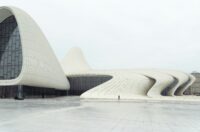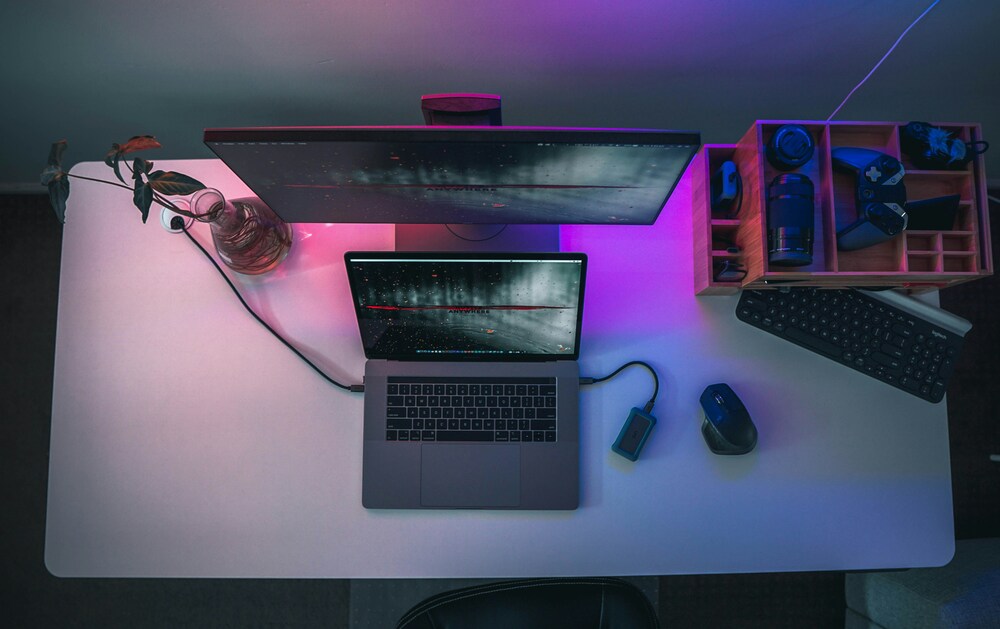- Home
- Articles
- Architectural Portfolio
- Architectral Presentation
- Inspirational Stories
- Architecture News
- Visualization
- BIM Industry
- Facade Design
- Parametric Design
- Career
- Landscape Architecture
- Construction
- Artificial Intelligence
- Sketching
- Design Softwares
- Diagrams
- Writing
- Architectural Tips
- Sustainability
- Courses
- Concept
- Technology
- History & Heritage
- Future of Architecture
- Guides & How-To
- Art & Culture
- Projects
- Interior Design
- Competitions
- Jobs
- Store
- Tools
- More
- Home
- Articles
- Architectural Portfolio
- Architectral Presentation
- Inspirational Stories
- Architecture News
- Visualization
- BIM Industry
- Facade Design
- Parametric Design
- Career
- Landscape Architecture
- Construction
- Artificial Intelligence
- Sketching
- Design Softwares
- Diagrams
- Writing
- Architectural Tips
- Sustainability
- Courses
- Concept
- Technology
- History & Heritage
- Future of Architecture
- Guides & How-To
- Art & Culture
- Projects
- Interior Design
- Competitions
- Jobs
- Store
- Tools
- More
Architectural Collaboration Tools: Best Browsers for Team Projects

Collaborating on architectural projects can be challenging, especially when you need seamless communication and access to shared resources. Using the right browser can make all the difference.
Understanding which browsers work best for architectural collaboration tools is crucial to your project’s success.
Google Chrome, with its extensive range of extensions and robust performance, typically stands out as a top choice. On the other hand, Firefox provides enhanced privacy features and customization options, adding another layer of efficiency and security to your teamwork.
When selecting a browser, consider how well they integrate with your preferred architectural tools and platforms. This not only streamlines your workflow but also enhances collaboration, ensuring your projects move forward smoothly and efficiently.
Table of Contents
ToggleUnderstanding Architectural Collaboration
Effective architectural collaboration hinges on clear communication and the seamless integration of diverse ideas. This process is supported by the right tools that facilitate teamwork and address common challenges.

The Essentials of Teamwork in Design
For a successful collaborative architectural project, fostering strong communication and trust among team members is essential. Shared platforms allow architects to present drafts, receive feedback, and implement changes quickly. With tools offering real-time updates, everyone stays in sync.
Role assignment plays a critical role too. Assigning specific tasks to team members ensures everyone knows their responsibilities. Accountability increases, streamlining workflow and reducing overlapping efforts.
To achieve smooth collaboration, choose tools that offer project tracking and version control features.
Challenges in Collaborative Architectural Projects
Communication breakdowns can derail even the best collaborative efforts. Misunderstandings may lead to design changes being overlooked or implemented incorrectly. Regular meetings and using tools with comprehensive communication functionalities help mitigate these issues.
Another significant challenge is managing diverse input from multiple team members. Balancing competing ideas requires diplomatic skills and sometimes, compromises. Tools with comment and review features can streamline this process, helping to consolidate feedback effectively.
Project management can also become complex with large teams. Keeping everyone aligned demands detailed planning and constant updates. Opt for tools that offer robust project management capabilities, ensuring timelines and milestones are clearly set and adhered to.
Picking the Right Browser for Your Team
Choosing the right browser for architectural collaboration can impact efficiency and productivity. Consider the criteria that enhance team workflow, the top browsers available, and the customization options tailored for architecture needs.
Criteria for Selection
When picking a browser for your team, focus on performance and compatibility with various collaboration tools. Speed and security are vital. A browser that handles large files swiftly and protects sensitive architectural data is a must.
Check for easy integration with your existing software. Compatibility with popular tools like Revit, AutoCAD, and BIM 360 is crucial for seamless workflow. Look for extensions and features that facilitate smooth, real-time collaboration and communication.
Consider user interface and ease of use. A clean, intuitive UI helps team members navigate efficiently, reducing friction and time wasted on learning curves.
Top Browsers for Collaborative Work
- Google Chrome: Known for its speed and extensive library of extensions. Chrome’s performance with Google’s suite of tools can be a significant advantage.
- Microsoft Edge: Offers robust performance, integration with Microsoft Office tools, and enhanced security features. It’s particularly good for teams using Windows.
- Brave: Focuses on privacy and speed. Comparing Brave vs Chrome shows how Brave enhances user data protection without sacrificing performance, making it a solid option for sensitive projects.
Consider a comparison of brave vs. chrome in terms of speed, security, and tool integrations to find the best fit for your team.
Customizing Browsers for Architectural Needs
Tailor your browser to meet architectural demands with the right add-ons and settings. Extensions like Web Clipper, Screencastify, and Project Management tools can streamline documentation and communication.
Adjust settings to optimize performance. Enable hardware acceleration for rendering complex graphics and use developer tools to troubleshoot web-based applications necessary for your projects.
Consider privacy settings to protect client information. Customizing a browser to block trackers and enable strict security protocols keeps your data secure, crucial for compliance and trust.

Enhancing Workflow with Browser Integrations
Architectural collaboration tools are greatly enhanced by browser integrations, which can streamline your workflow through extensions, real-time editing, and project management plugins.
Best Extensions for Architects
Browser extensions are essential for architects to increase productivity. Evernote Web Clipper allows you to save and annotate web pages quickly, which is useful for research.
WhatFont helps identify fonts on web pages, aiding in design work. Page Ruler Redux helps you measure pixel dimensions and positioning.
Using Trello extension can also streamline task management, keeping your projects organized. Grammarly can ensure that your written communications remain professional and error-free. Each tool integrates seamlessly with your browser, minimizing the disruptions in your workflow.
Real-Time Editing and Communication
For real-time editing and communication, collaborate efficiently with tools like Google Docs and Figma. These platforms allow multiple team members to work on the same document or design file simultaneously. They’re accessible directly through your browser without the need to download heavy software.
Platforms like Slack offer browser-based real-time messaging, enabling instant communication and quick decision-making. Integrations with services like Zoom allow you to initiate video calls directly from your browser, making it easier to discuss project details face-to-face.
Project Management Plugins
Project management becomes simpler with browser-based plugins. Trello and Asana have powerful plugins that let you manage tasks, set deadlines, and monitor progress without leaving your browser. Monday.com enhances these functionalities and provides a robust interface for project tracking.
ClickUp includes features for time tracking, document sharing, and task dependencies, all accessible through your browser. Integration with calendar tools like Google Calendar helps you stay on top of deadlines, ensuring that every project milestone is met on time.
Maintaining Safety and Compliance
Staying safe and compliant is essential for any team project, especially when working in architecture. Robust security features and strict data privacy measures are crucial to protect your valuable information.
Security Features Crucial for Collaboration
When collaborating on architectural projects online, security features help keep everything safe from unauthorized access. Look for browsers that offer:
- End-to-end encryption: Ensures that only you and your team can read your messages and data.
- Multi-factor authentication (MFA): Adds an extra layer of security beyond just passwords.
- Regular security updates: Keeps your browser safe from new threats.
- Secure browsing protocols (HTTPS): Protects data as it travels between your computer and the web server.
Security is not just about preventing unauthorized access but also about ensuring smooth team collaboration without interruptions. A secure browser gives peace of mind, knowing your data is protected.

Ensuring Data Privacy and Protection
Data privacy in architecture collaboration ensures that sensitive project details remain confidential. To maintain data privacy:
- Use browsers that block third-party cookies to prevent tracking by websites you visit.
- Enable built-in privacy settings that allow you to control what data is shared.
- Choose browsers that don’t sell user data to advertisers, maintaining privacy.
Additionally, browsers offering private browsing modes are beneficial for working on confidential projects without leaving a trail. Businesses must adhere to legal standards and regulations regarding data protection.
Ensuring data privacy builds trust among team members and clients, safeguarding your professional integrity.
Conclusion
Choosing the right browser is crucial for effective architectural collaboration. The best browsers, like Google Chrome and Firefox, offer unique features that cater to the specific needs of architectural teams, from seamless integration with tools to robust security measures.
By selecting a browser that aligns with your team’s workflow, you can enhance communication, streamline project management, and ensure data protection, ultimately leading to more successful project outcomes.
illustrarch is your daily dose of architecture. Leading community designed for all lovers of illustration and #drawing.
Submit your architectural projects
Follow these steps for submission your project. Submission FormLatest Posts
How Virtual Architecture Is Redefining Design From Real Time Worlds to Built Impact
Discover how virtual architecture is redefining design from static sketches to immersive,...
Designing a Starter Smart Home Without Breaking the Bank
Smart homes don’t have to cost a fortune. Many homeowners think they...
Style Meets Security: Choosing Entry Solutions That Do Both
When it comes to homes and businesses, entryways are more than just...
Top 5 Desktop Rebuild Cost Assessment Solutions for Property Professionals
Do you ever lay awake at night, playing out scene after scene...












Leave a comment